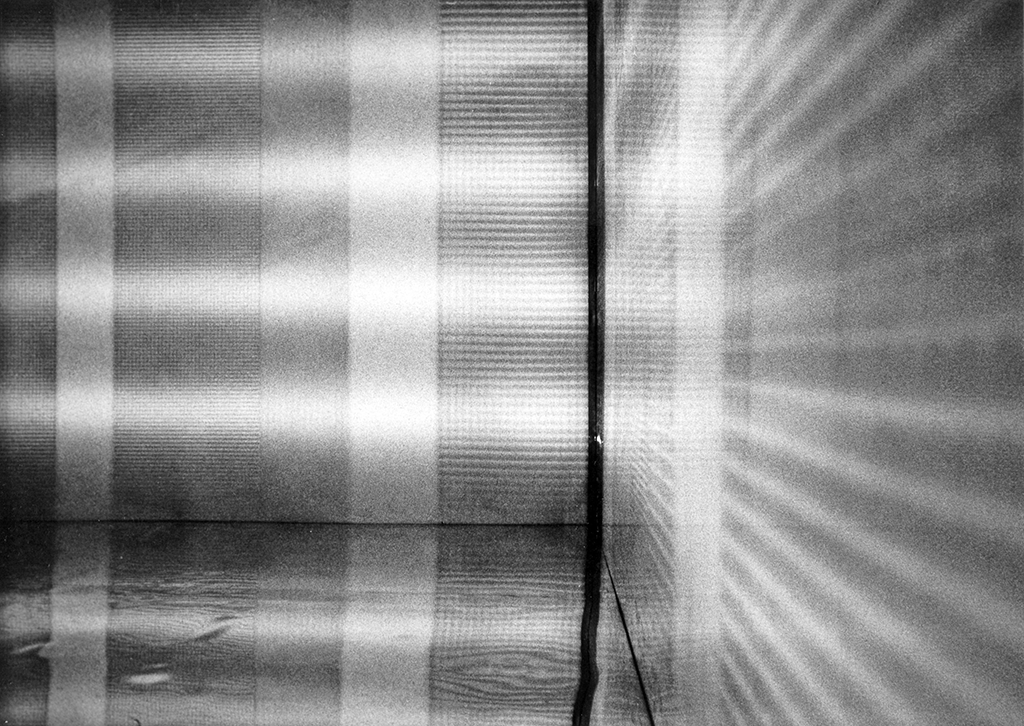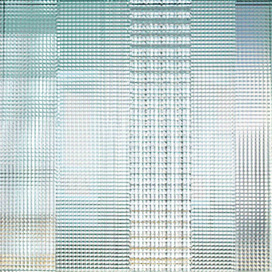
Nanda Vigo

Nanda Vigo (Milan, 1936 – 2020) showed an interest in art at a very early age, when she had the opportunity to spend time with Filippo de Pisis, a family friend, and to study the architecture of Giuseppe Terragni, in which she immediately noticed the subtle employment of natural light. She studied architecture at the Ecole Polytechnique in Lausanne, worked as an intern in San Francisco, then returned to Italy where she opened her own studio in Milan. The underlying characteristic of the work has always been the relationship between light and space, which she has developed in a series of “environments” that blend architecture and design. In 1959 she began to visit the studio of Lucio Fontana and got to know that artists who founded the Azimut Gallery in Milan: Piero Manzoni, Enrico Castellani and Vincenzo Agnetti. During that period, she developed relations with the artists of the Zero group in Germany, the Netherlands and France, as a result of which her work was shown in more than 400 solo and group exhibitions throughout Europe.
In 1959 she began work on the ZERO House or Casa Pellegrini, a living-space painted entirely white with works on the walls by Castellani and Fontana. The space was only finally built in 1962. Between 1964 and 1966 she participated in some thirteen Zero exhibitions, including “Nul 65” at the Stedelijk Museum in Amsterdam, and “Zero: An Exhibition of European Experimental Art” at the Modern Art Gallery in Washington D.C.. She was the curator of the legendary exhibition “Zero avantgarde” in 1965 in Fontana’s studio in milan, at which some 28 artists were represented.
From 1965 and ’68 she conceived and created the Casa sotto la Foglia with Giò Ponti in Malo (VI), an entirely white house inside and out. In 1964 she created Utopie with Lucio Fontana for the Triennale. Again at the Triennale, in 1973 she organized a performance at which architects and artists freely intervened: it is considered to have been the first happening at the event.
In 1974 she received the New York Award for the Industrial Design for the Golden Gate lamp, ant the same year designed and built the Casa-Museo (House-Museum) for artist Remo Brindisi in Lido di Spina (FE). In 1976 she was awarded the Saint-Gobain Prize for the work with glass.
She taught at the Institut Polytechnique in Lausanne, the Accademia in Macerata, the Istituto Europeo di Design in Milan, and in 1999 at the master’s course in Lighting Design at the Accademia di Brera in Milan. In 1982 her work was included at the Venice Biennale.
In 1997, with Mazzotta and Mudima Foundations, she curated the exhibition “Piero Manzoni. Milano et Mitologia” at the Palazzo Reale in Milan. She won the Koiné Prize for the same set up. Around the same time, she was the artistic coordinator of three film dedicated to the three masters of Italian art, Giò Ponti, Lucio Fontana and Piero Manzoni, under Produzione Metamorphosi “Trilogy”.
The exhibition of her work at the 2006 Milan Triannale underlined her uninterrupted creativity since her earliest works.
Resting faithful to the artistic convictions she had championed throughout her career, Nanda Vigo’s work combined art, design, architecture and “ambienti”, operating no distinction between architecture, design and art, and with the intrinsic belief that the concept renders explicit a spiritual and almost initiatory research. Her unconventional career has been distinguished by the emphasis she places on research unbounded by any disciplinary limits, in which her inspiration is given by philosophical theories rather than aesthetic doctrines.
Her involvement with some of the most important creators of her time led her to actively promote the artistc tendencies to which she has always adhered, an approach that has resulted in invitations to curate many exhibitions, notably those dedicated to the Zero Group, such as “Italian Zero & Avantgarde 60s” at the MAMM in Moscow in 2012, and the “Zero avant-garde 1965-2013” at the Christian Stein gallery in Milan at the end of 2013. She also showed at the Zero exhibition at the Solomon R. Guggenheim Museum in New York.
Some of her works are included in the collections of the GNAM, Museum of Modern Art in Rome, and it has been represented on a permanent basis at the Museum of Design at the Milan Triennale. And since 2013, her works have been presented in the collection of the Italian Ministry of Foreing Affairs.
